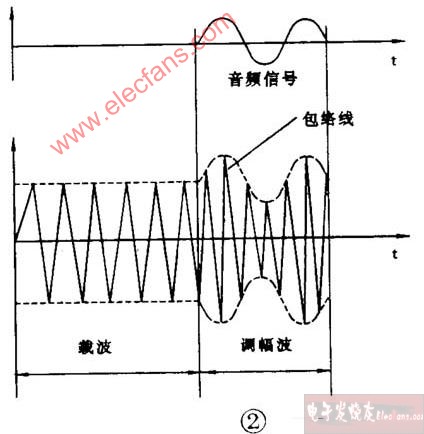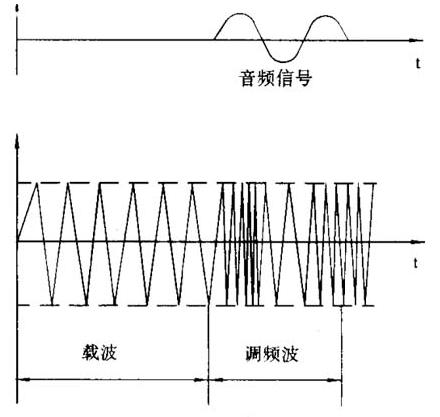The difference between modulation and demodulation
In radio technology, modulation and demodulation occupy a very important position. Without modulation and demodulation technology, there would be no radio communications, no radio and television, and no BP paging, handheld phones, faxes, computer communications and Internet.
Modulation is the process of changing certain parameters (such as amplitude, frequency, etc.) of a signal (such as light, high-frequency electromagnetic oscillation, etc.) according to the characteristics of another signal (such as sound, image, etc.) to be transmitted. For example, the frequency of a medium-wave broadcasting station is 540 kHz. This frequency refers to the frequency of the carrier wave, which is a constant-amplitude sine wave frequency generated by high-frequency electromagnetic oscillation. Use the language or music signal to be transmitted to change the amplitude of the high-frequency oscillation, so that the amplitude of the high-frequency oscillation changes with the change of the language or music signal. This control process is called modulation. The language or music signal is called a modulation signal, and the modulated carrier wave carries the information contained in the modulation signal, which is called a modulated wave.
Modulation is most widely used in radio transmitters. Figure 1 is a block diagram of the transmitter. The high-frequency oscillator is responsible for generating the carrier signal. After sending the signal to be transmitted together with the high-frequency oscillation signal into the modulator, the high-frequency oscillation is modulated and radiated by the antenna in the form of electromagnetic waves after amplification. The modulator has two input terminals and one output terminal. The two inputs are the modulated signal and the modulated signal. One output is the synthesized modulated carrier signal. For example, the simplest modulation is to add two input signals to the base and emitter of the transistor, and the collector outputs the modulated signal.

Why use language or music signals to control high-frequency oscillations? It turns out that the energy of the signal is transmitted into the air in the form of an electric field and a magnetic field and transmitted to a distant place. A higher oscillation frequency is required to make the electric field and the magnetic field change rapidly; at the same time, the wavelength of the signal must match the length of the antenna. The frequency of the language or music signal is too low to generate rapidly changing electric and magnetic fields; accordingly, their wavelength is too large, even if the highest frequency of 20000Hz is selected for calculation, the wavelength is still 15000m, which is practically impossible to set up Such a long antenna. It seems that to transmit the signal, the frequency must be increased and the wavelength shortened. However, high-frequency signals over 20kHz cannot be heard by the human ear. In order to solve this contradiction, the only way is to "ride" the audio signal on a high-frequency carrier, that is, modulate, and use the high-frequency electromagnetic wave to emit the low-frequency signal and transmit it to a distant place.
According to the different parameters of the modulated signal, the modulation method is also different. If the controlled parameter is the amplitude of high frequency oscillation, this modulation method is called amplitude modulation, or AM for short; if the controlled parameter is the frequency or phase of high frequency oscillation, this modulation method is called frequency modulation or phase Modulation, referred to as frequency modulation or phase modulation (frequency modulation and phase modulation are also referred to as angle modulation).
The characteristic of amplitude modulation is that the frequency of the carrier remains constant, but its amplitude changes. The amplitude change curve is similar to the low-frequency signal to be transmitted. Its amplitude change curve is called the envelope, which represents the information to be transmitted, see Figure 2. Amplitude modulation is widely used in medium and short wave broadcasting and communications. The shortcoming of amplitude modulation is poor anti-interference ability, because various industrial interference and natural electricity interference will be superimposed on the carrier in the form of amplitude modulation, becoming interference and clutter.


Demodulation is the inverse process of modulation. Its function is to take out the original modulated signal from the modulated signal. For amplitude modulation, demodulation is the process of extracting the modulated signal from its amplitude change. For example, the demodulation of amplitude modulation waves in radios usually uses the unidirectional conduction characteristics of diodes to remove the amplitude modulation high-frequency signal by half, and then uses the capacitor's charge and discharge characteristics and low-pass filters to filter out high-frequency components For audio signals with the same shape of the cable, see Figure 4. For frequency modulation, demodulation is the process of extracting the modulated signal from its frequency change. Frequency demodulation is more complicated than amplitude demodulation. It is impossible to demodulate the modulated signal with a common detection circuit. Frequency detection must be used, such as various types of frequency discriminator circuits. The frequency discriminator circuit can refer to the relevant information, no longer elaborate here.

With the development and popularization of computers, modulation and demodulation also play a very important role in computer communications. A modem called a modem converts the digital information of the computer into an analog form that can be passed along the telephone line, and the modem converts it back to digital information at the receiving end. Converting digital information into analog form is called modulation, and converting analog form back to digital information is called demodulation. After the information goes through the computer and the modem, it becomes a "high-speed information practice". People around the world can use computers to transfer information to each other, and remote communication is no longer a difficult thing.
managed gigabit Ethernet POE Switch is a industrial managed and redundancy Ethernet Switch, providing Gigabit Ethernet 1000Base-X SFP ports and up to 100Base-TX ports. Industrial design: -40℃~+80℃ working temperature and redundant power input, IP40 level, according with the requirements of the EMC industrial level 4, DIN-Rail mounting or wall mounting, (Recovery time<20ms), RSTP, STP and MSTP protocol, satisfied the reliable and practical requirement of industrial control for network system, the reliable hardware design is specially use for industrial communication continuous running.
Managed Gigabit Ethernet POE Switch
Managed Gigabit Ethernet POE Switch,Managed Gigabit Switch,Managed Switch POE,Managed Ethernet Switch,Gigabit Managed POE Switch , L2 Managed POE Switch
Shenzhen N-net High-Tech Co.,Ltd , http://www.nnetswitch.com
